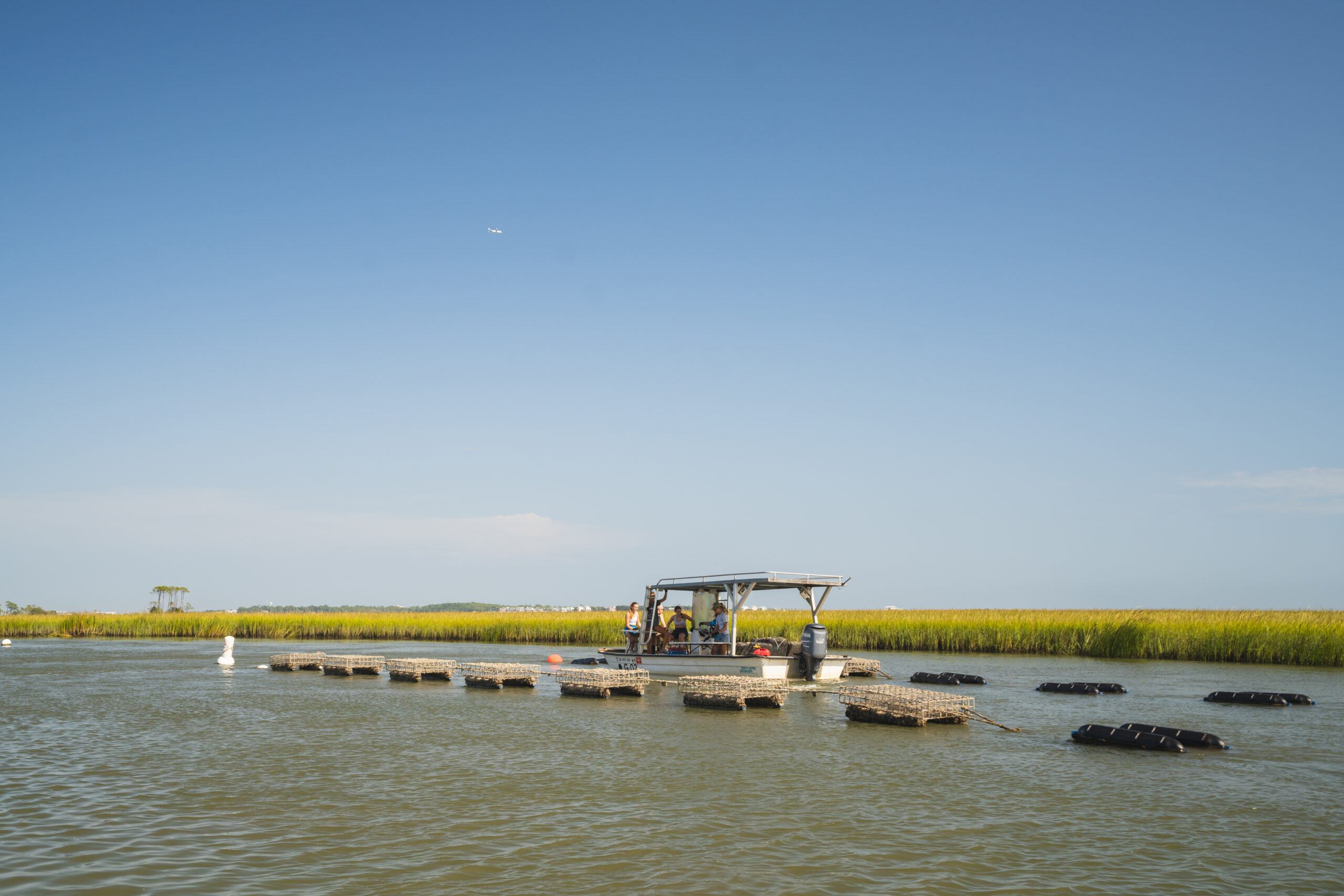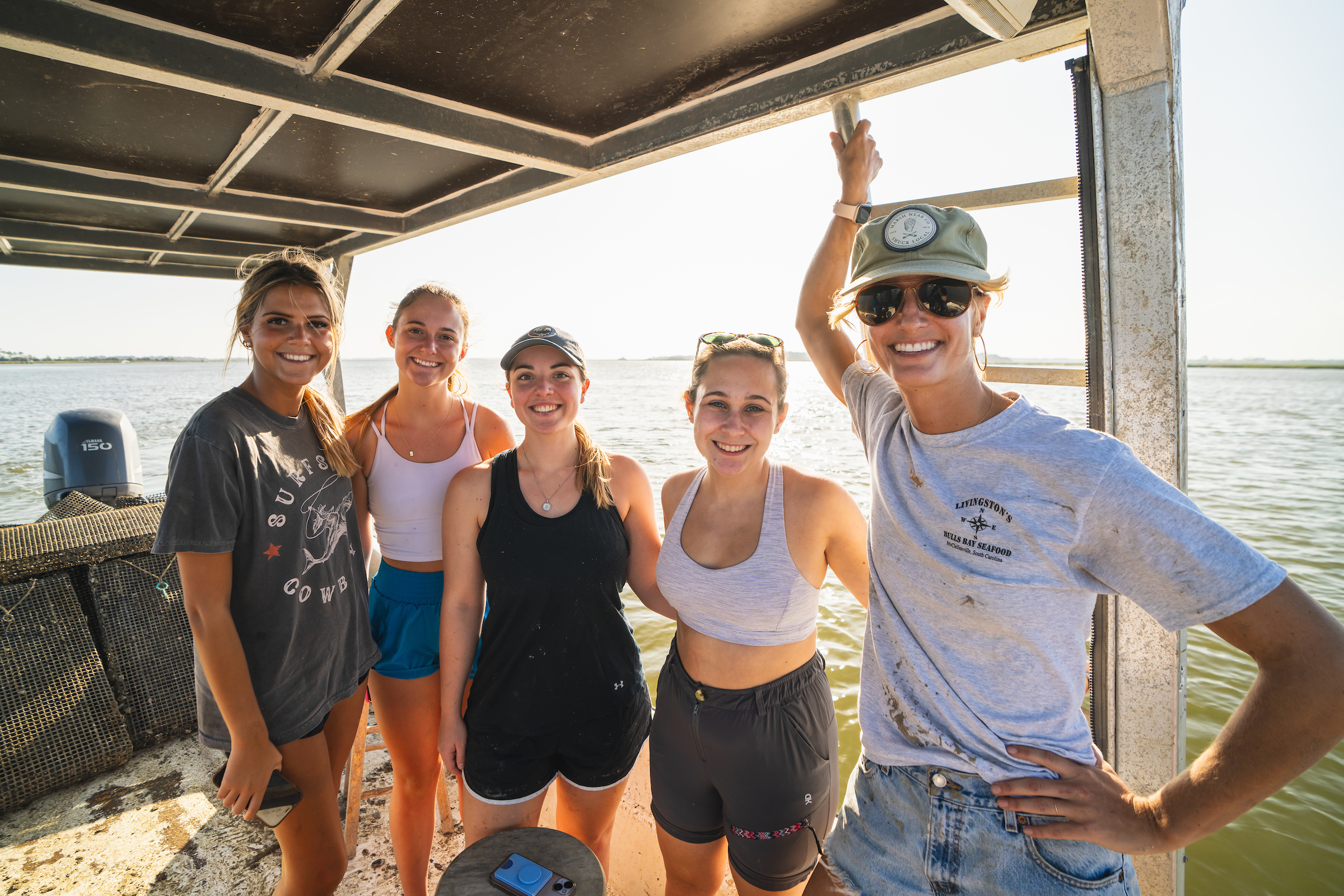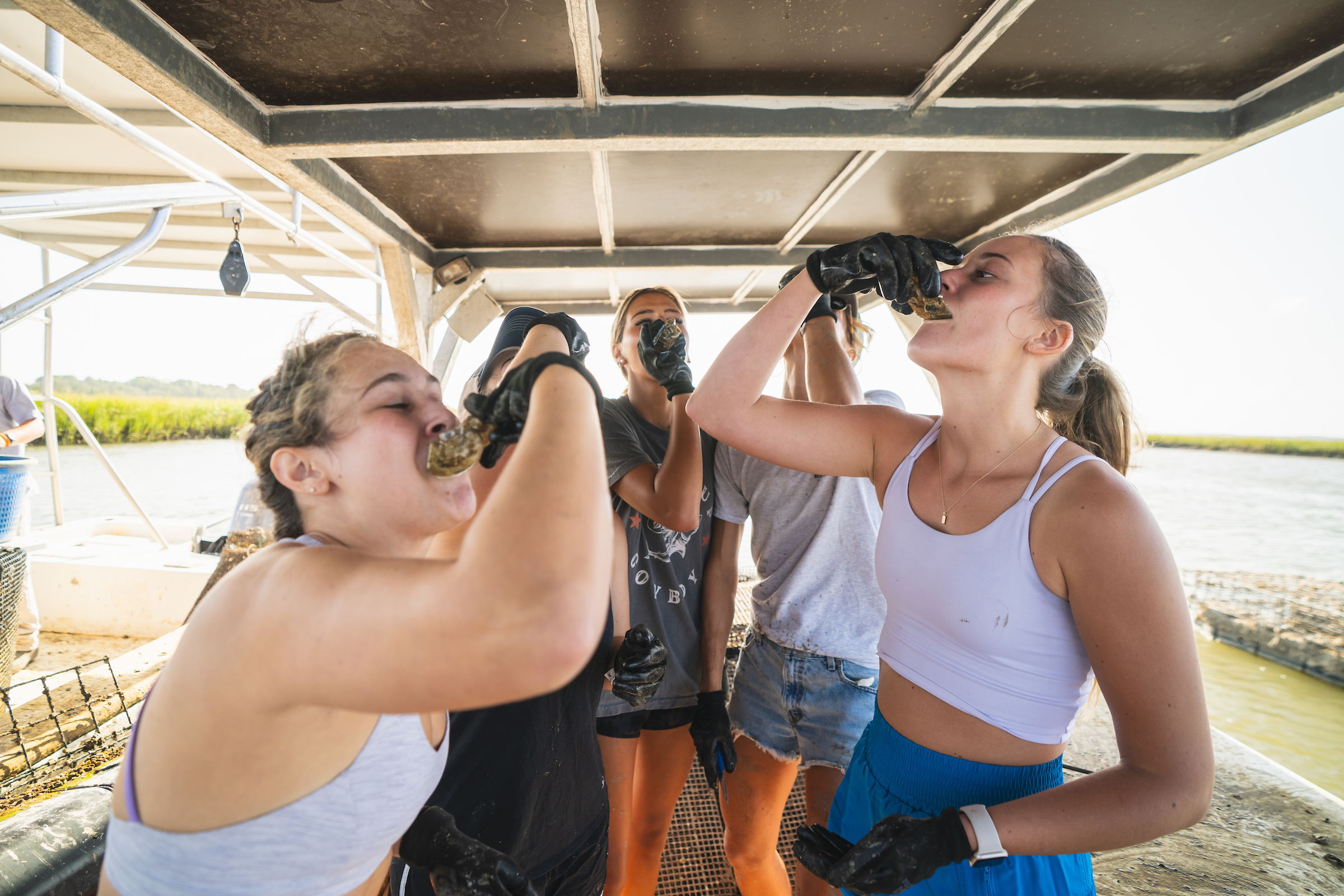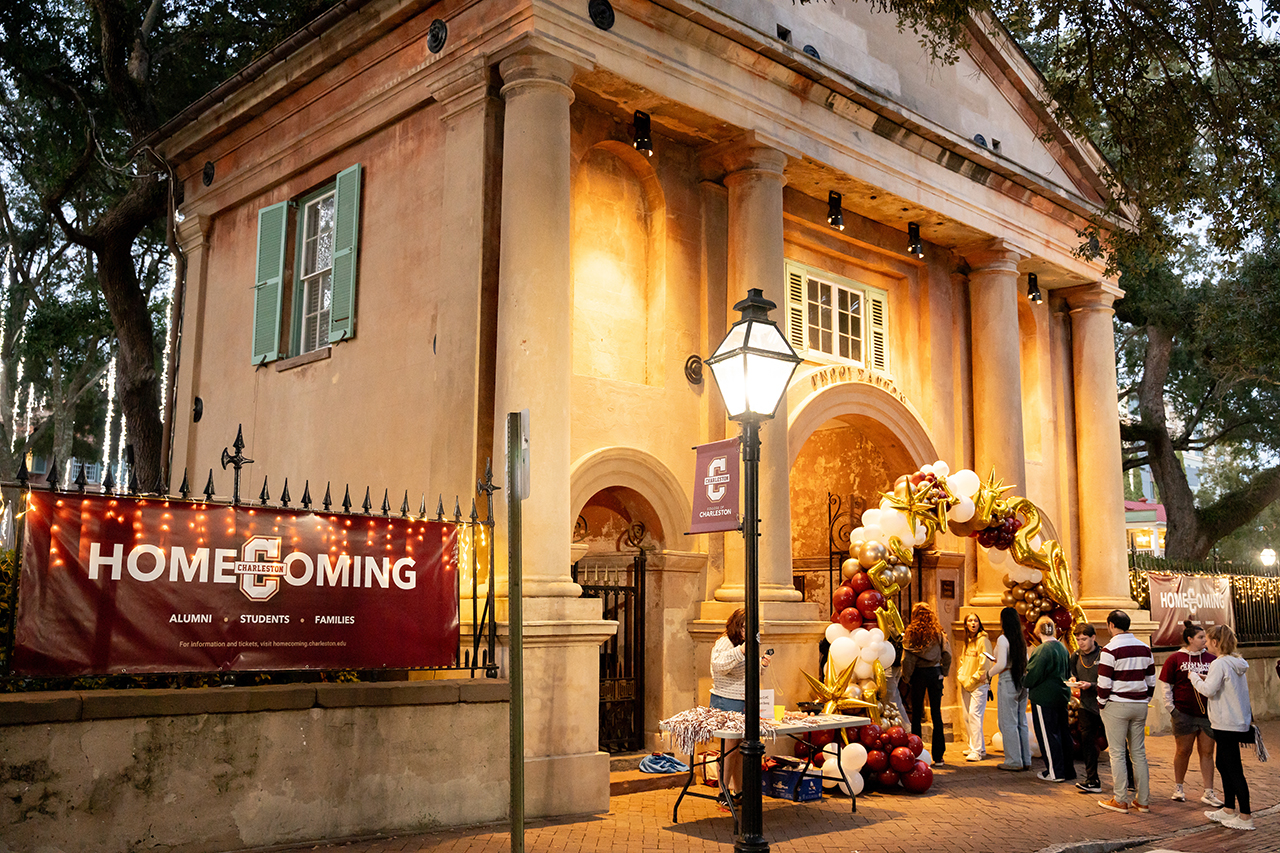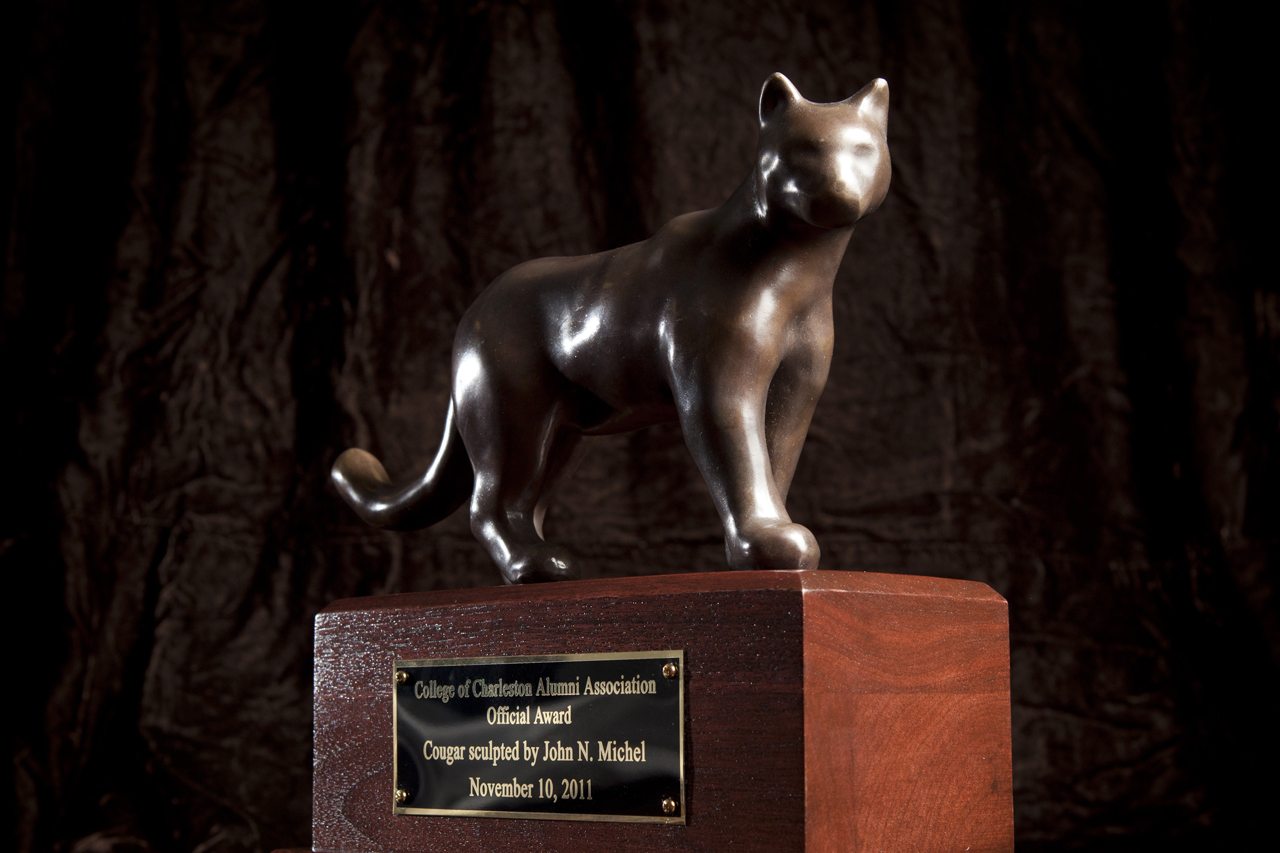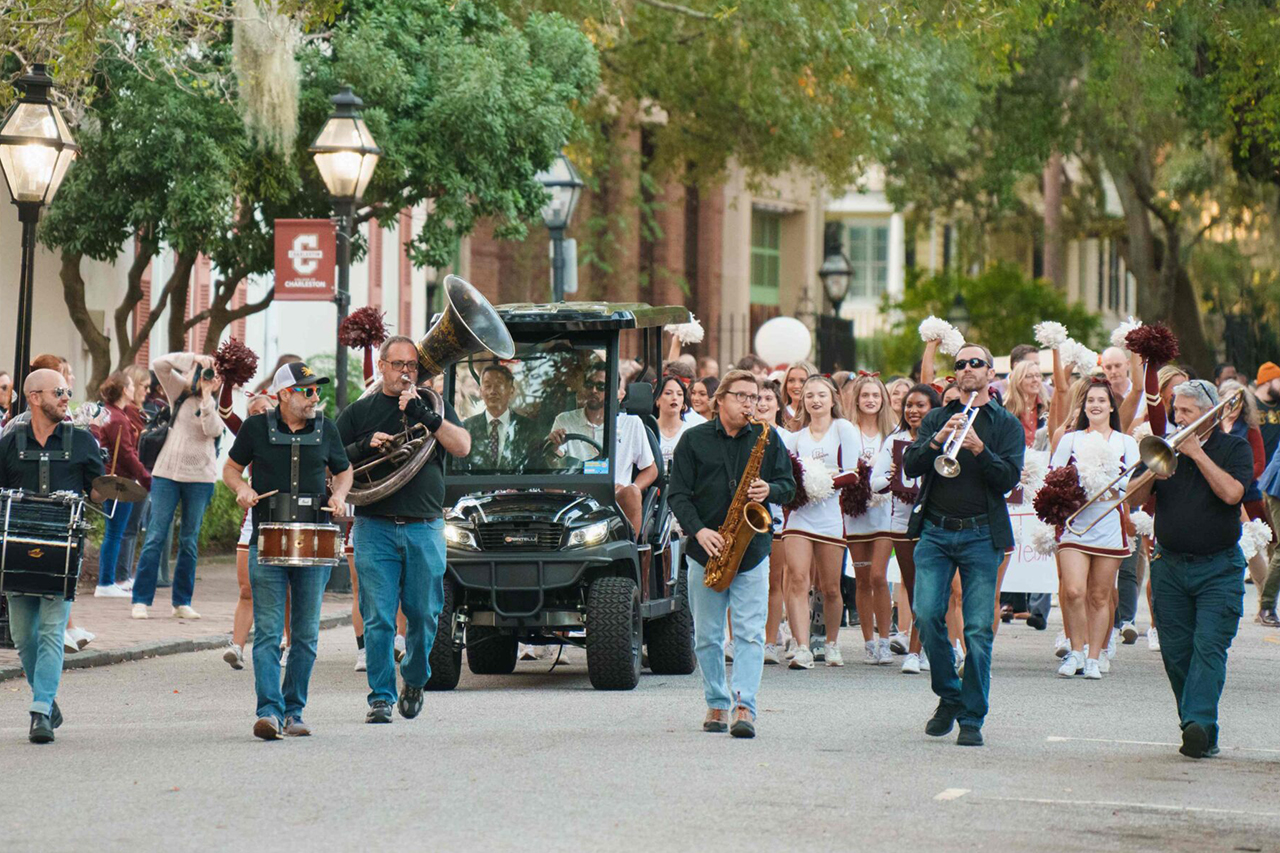For These Six Alumni, the Oyster is Their World
Oysters are found throughout the world’s oceans, but nowhere is this keystone species more intrinsic to the community than in the Lowcountry, thanks in part to the dedication of these College alumni.
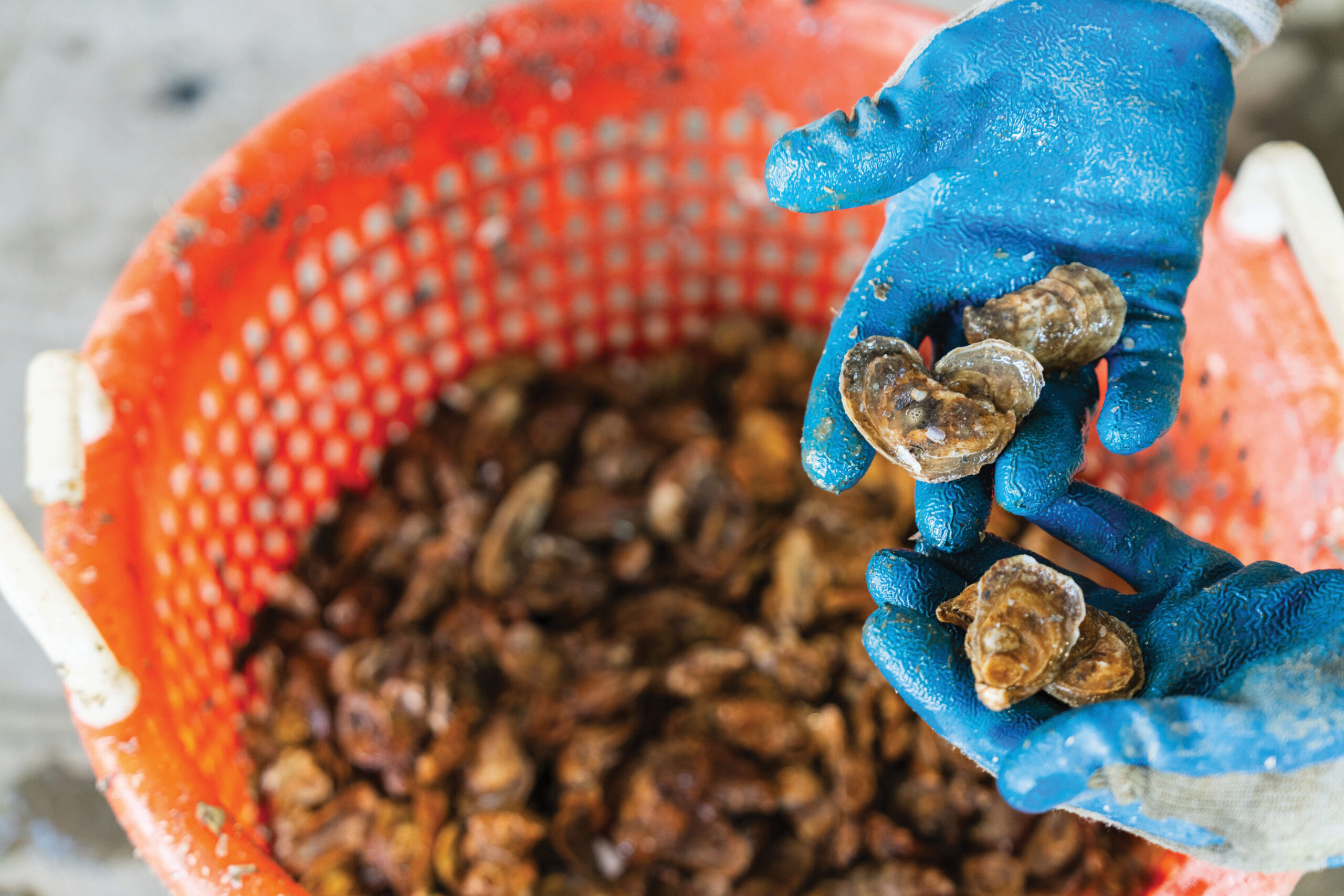
It’s hard to imagine life in the Lowcountry without the oyster – that go-with-the-flow bivalve nestled in the pluff mud just beyond the spartina grass of our marshy shorelines. It’s been an integral part of our landscape all along – showing itself twice a day before retreating below the surface of our brackish waters.
But if we look around, the oyster is everywhere: From the Native Americans’ tabby middens and shell rings to the tabby walls of the British forts, they’re the reason Charles Towne was first dubbed Oyster Point.
So ingrained in our culture is the oyster that it’s easy to take it for granted. But for boat builders, welders, fishers, oystermen, equipment builders – nay, for entire communities like the Gullah Geechee – oysters are at the heart of the economy’s infrastructure. Our tourism. Our art. Our cuisine. Our celebrations.
But it’s the ripple effect the oyster has on our ecosystem that is most vital. They filter our water and improve its quality by removing mud, sand and algae from intertidal areas. Oyster reefs protect the salt marshes, stabilize our sediment and limit erosion – something that becomes more and more important as
sea levels rise. They promote growth of underwater plants and create healthy estuaries. As a keystone species, the oyster gives life to the Lowcountry, improving habitat conditions for many marine animals, including shorebirds, porpoises, sharks, otters and commercially and recreationally valuable fish, shrimp and crab.
Indeed, it’s hard to imagine life in the Lowcountry without oysters. That’s why conservationists, local governments, scientists, policymakers, researchers, educators and entrepreneurs have turned their attention to the mariculture industry and the protection, restoration and growth of these humble stewards of our waterways.
From reef restoration programs and community outreach to environmentally sensitive farming techniques, from sustainable seafood to celebratory creations, from conservation projects to foresighted preparation: Here are but a few of the College of Charleston alumni making sure that we never have to live in a world without the oyster.

NANCY HADLEY ’82 (M.S.)
Oysters weren’t on her radar when Nancy Hadley ’82 (M.S.) started working with the South Carolina Department of Natural Resources as a marine biology graduate student at the College. In fact, clam mariculture was her main focus for the first 10 years with SCDNR.
“When the interest in ecosystem services started to be more of an interest, that’s when oysters started to come into the picture and I started to understand that oysters are really a keystone species,” says the retired shellfish research biologist who oversaw the SCDNR’s shellfish management program and has been instrumental in developing the state’s aquaculture regulations and policies. “Once I started to see how important they were, then I started to get really excited about making sure everybody saw that.”
One way she went about that was helping launch the DNR’s South Carolina Oyster Restoration and Enhancement program in 2000. With the mission of restoring and enhancing oyster habitat, SCORE is a volunteer-based program that plants recycled oyster shells in the intertidal environment to form new, self-sustaining oyster reefs.
“We weren’t sure anybody would volunteer to come out in the mud with us and build oyster reefs, so it was a pleasant surprise to find out that people were actually very eager to do that,” she says, adding that College of Charleston students were active volunteers from the beginning. “We realized, ‘Well, we can make a research project out of this,’ so we designed a research project to go along with the SCORE project, where we would use the volunteers to help us build reefs at multiple sites.”
Since then, SCORE has made great progress not just in its research projects, but in its network of shell recycling drop-off sites throughout the Lowcountry.
“The volunteers were really useful in spreading the word about shell recycling because it was a new concept to people that, after they had their oyster roast, they could do something besides throw the shells in their driveway,” Hadley says, noting that as SCORE evolved, it became clear that getting groups involved and working with schools would establish continuity in the project. “I think getting kids and citizens interested and increasing their awareness that oysters in fact matter is probably the biggest thing SCORE has accomplished.
“Any legacy I have is through the SCORE project because it has reached so many people and is continuing to reach people,” she continues. “So I think the biggest contribution that I’ve made was getting the SCORE program off on strong footing from the start.”
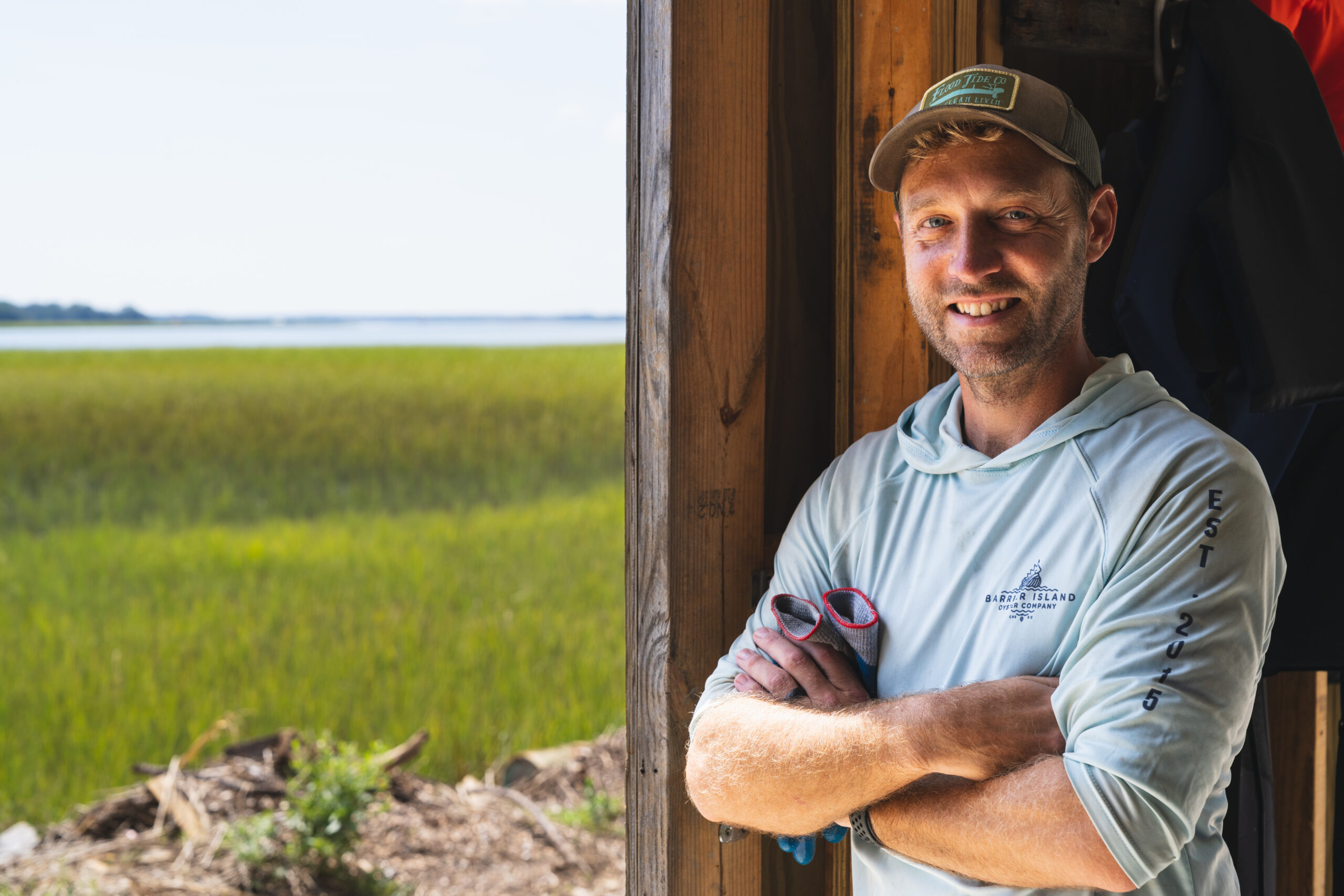
JOSH EBOCH ’08
When Josh Eboch ’08 started growing hatchery-spawned oyster seeds in cages that allowed the oysters to be continuously submerged, it was the start of something revolutionary for the Lowcountry.
“It was a big move because we had to risk everything,” says Eboch, founder and director of Barrier Island Oyster Co. and vice president of the South Carolina Shellfish Growers Association, explaining that – by using cages that float at the top of the water column – the oysters are flushed clean four times a day by the changing tides. “We were doing something that had never been done before. There’s a reason nobody was doing it though – it’s backbreaking work. But once you realize you’re not going to get rich from this, you have to rely on passion. You have to have a purpose.”
And Eboch and his staff of seven certainly have that.
“In the life of the oysters, I see our role essentially as shepherds, creating the most ideal conditions possible for their growth and reproduction,” says Eboch, adding that not only does BIO produce Sea Cloud single oysters, but it does so without disturbing the oysters that grow naturally along the Lowcountry shorelines. “I’m most proud of the long-term restorative impact that our wild farming practices have on the local waterways in which we work every day. Conserving these Lowcountry estuaries and leaving them better than we found them for the next generation is our company’s mission, and 30 years from now I hope that is our primary legacy.”
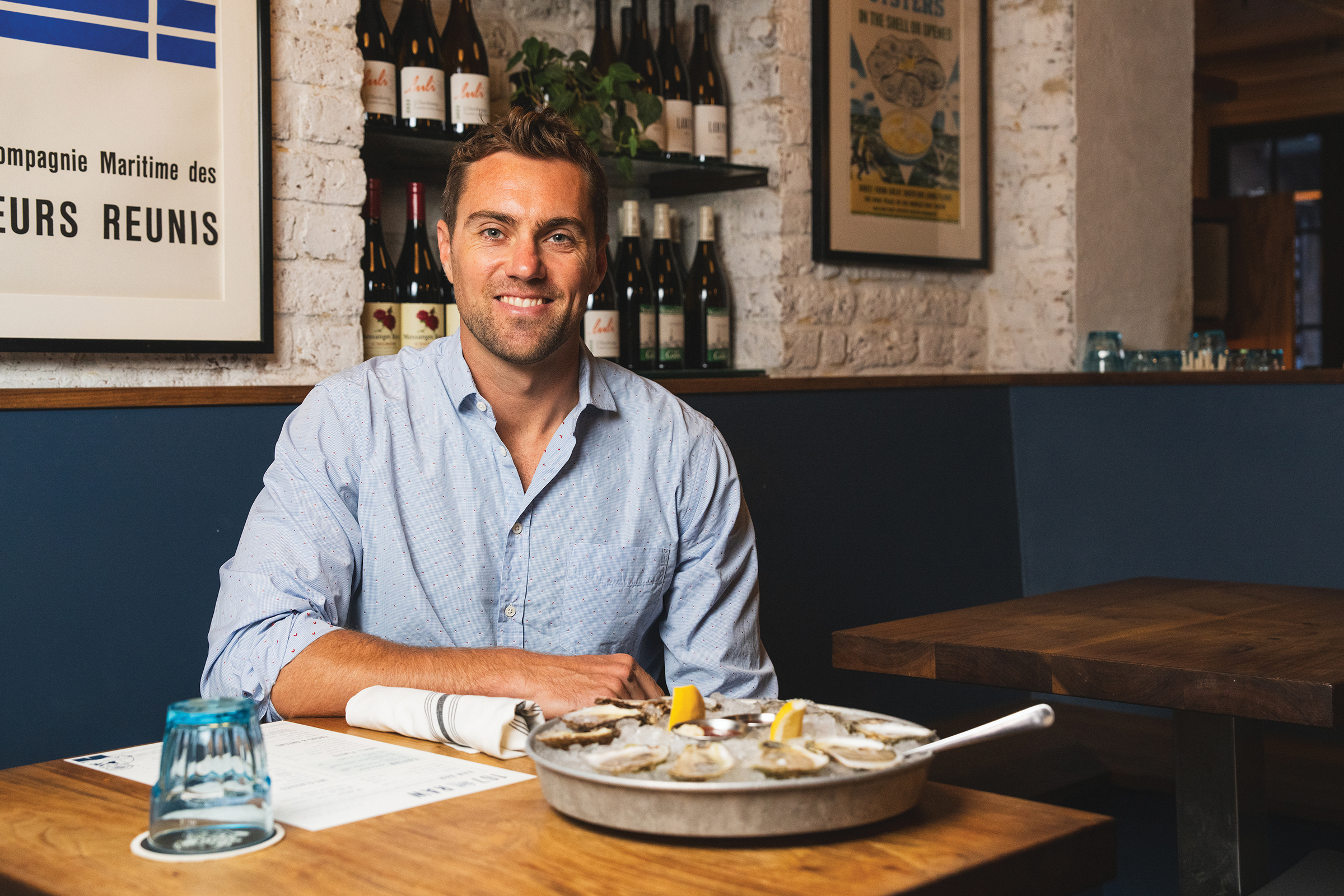
JESSE SANDOLE ’10
Oysters grown at Barrier Island Oyster Co. are distributed to many restaurants in Charleston, including 167 Raw, a popular, high-energy spot on lower King Street. Owner Jesse Sandole ’10 grew up around oysters, helping his dad out with his seafood wholesale business in Nantucket, Mass., and working the fish market every summer. He brought the family business to the South when he opened 167 Raw in 2014.
What started as a retail store for local fish and shellfish, with just four seats for customers to order oysters on the half shell and lobster rolls, evolved into a restaurant that has since moved to a larger space. Before plating oysters on beds of ice with cocktail sauce and tangy mignonette, the kitchen meticulously cleans and polishes the shells, which are later recycled.
“Oysters grow on top of old shells or other live oysters, resulting in the live oyster reefs we have here in Charleston,” says Sandole, “so it’s very important that we get as many shells as possible back into our local waters.”
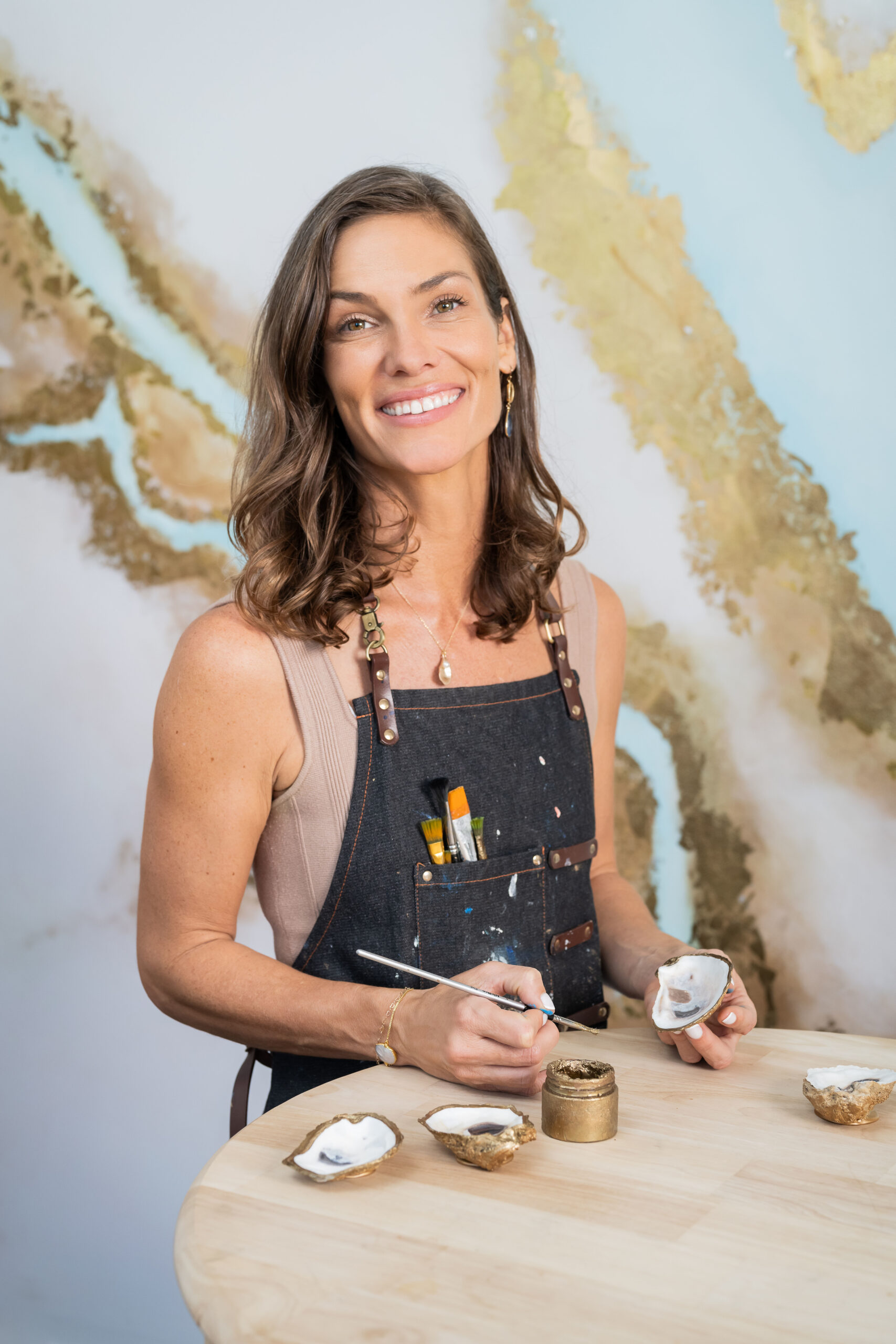
RACHEL GORDON ’06
While most people see oyster shells as refuse from a delicious meal, entrepreneur Rachel Gordon ’06 sees them as a canvas. Gordon is the founder of Grit & Grace Studio, and some of her best-selling items are her hand-painted oyster shells, which she turns into jewelry, candles and tablescapes, among other products. And, while the creations in her shop are gorgeous to behold, she also uses leftover shells to help reef restoration in the Lowcountry.
When she first started working with the mollusks, Gordon quickly found out how important it is to recycle them, and within weeks of opening Grit & Grace, the practice became a core tenet of the business. She now works with the SCDNR to bring leftover shells from Charleston seafood restaurants like 167 Raw to be planted back in the coastal waters.
“Our role at Grit & Grace is to be guardians of the land and water we hold so sacred,” she says, “and we take this responsibility seriously.”
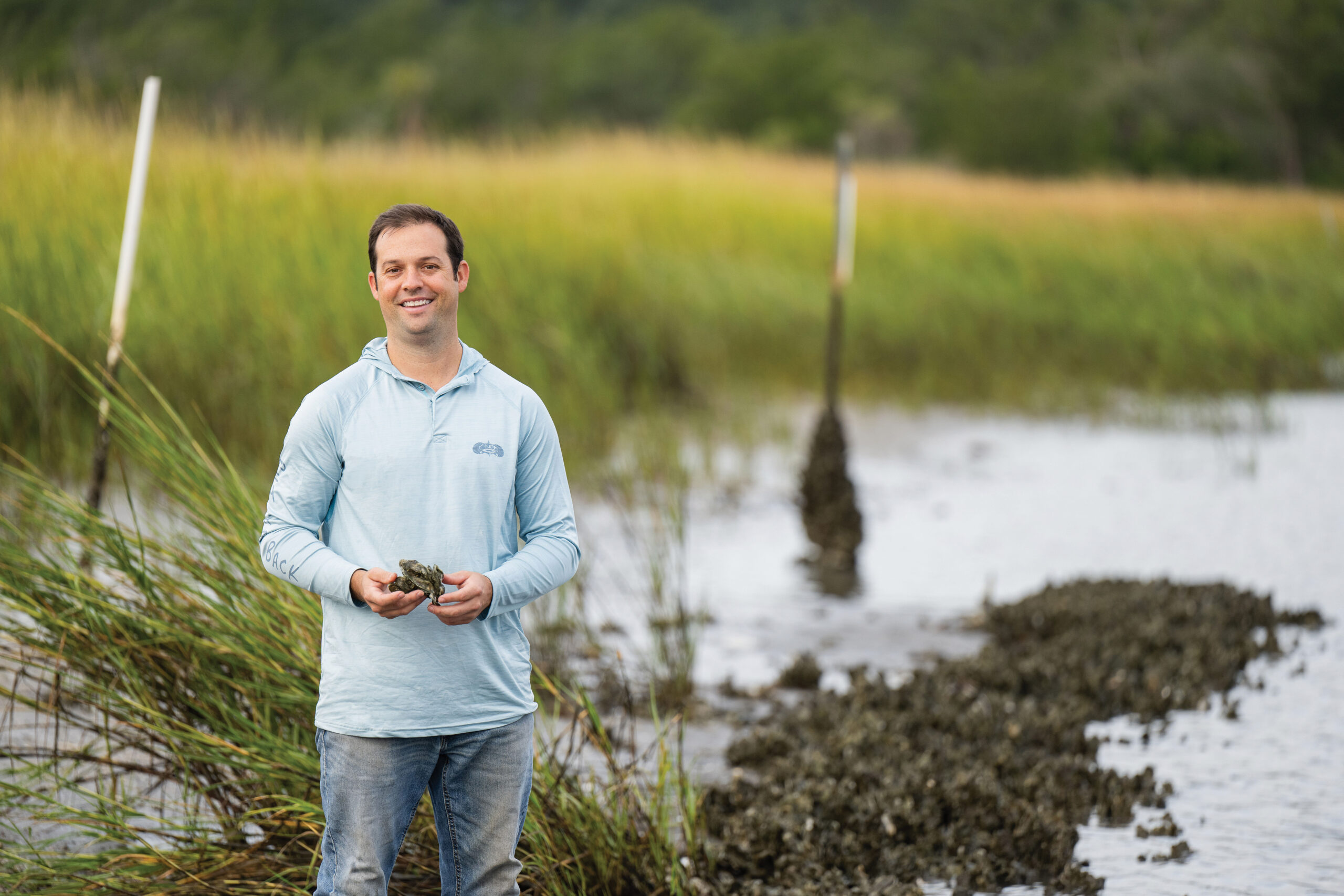
Casey Davidson ’08
When Casey Davidson ’08 started the Lowcountry lifestyle brand Toadfish, he knew what his mission was before he knew what his product would be.
“I knew I wanted to start a brand that replanted oysters to help clean the water – and I knew it would be called Toadfish,” says the Beaufort, S.C., native. “The toadfish is this gnarly little fish that lives on the oyster beds – they live down there and ambush predators, and it depends on the oyster for survival. The scientific name is actually an oyster toadfish. So it fit with my ultimate conservation goals, and I thought, ‘What a better champion for oyster restoration than this?’”
Through its Put ’Em Back movement, which uses a portion of its sales to fund oyster restoration projects, Toadfish has been responsible for replanting more than 280,000 square feet of oyster beds in eight states. And, considering that a single adult oyster can filter up to 50 gallons of water each day, that’s about 82 million gallons of water every day.
“I’m proud of how much we’ve been able to give, but there’s still so much to be done to close this tremendous gap between what we’re taking out and what we’re putting back in,” says Davidson, adding that in 2019, he started the nonprofit Toadfish Conservation Coalition to do fundraising events like the annual Shellabration on Bowens Island to further boost his impact on not just the oysters, but the coastal communities that consume them, too.
“If you’re going to live on the coast and you’re going to throw oyster parties, you need to be responsible enough to recycle your shells. The environment needs those shells back.”
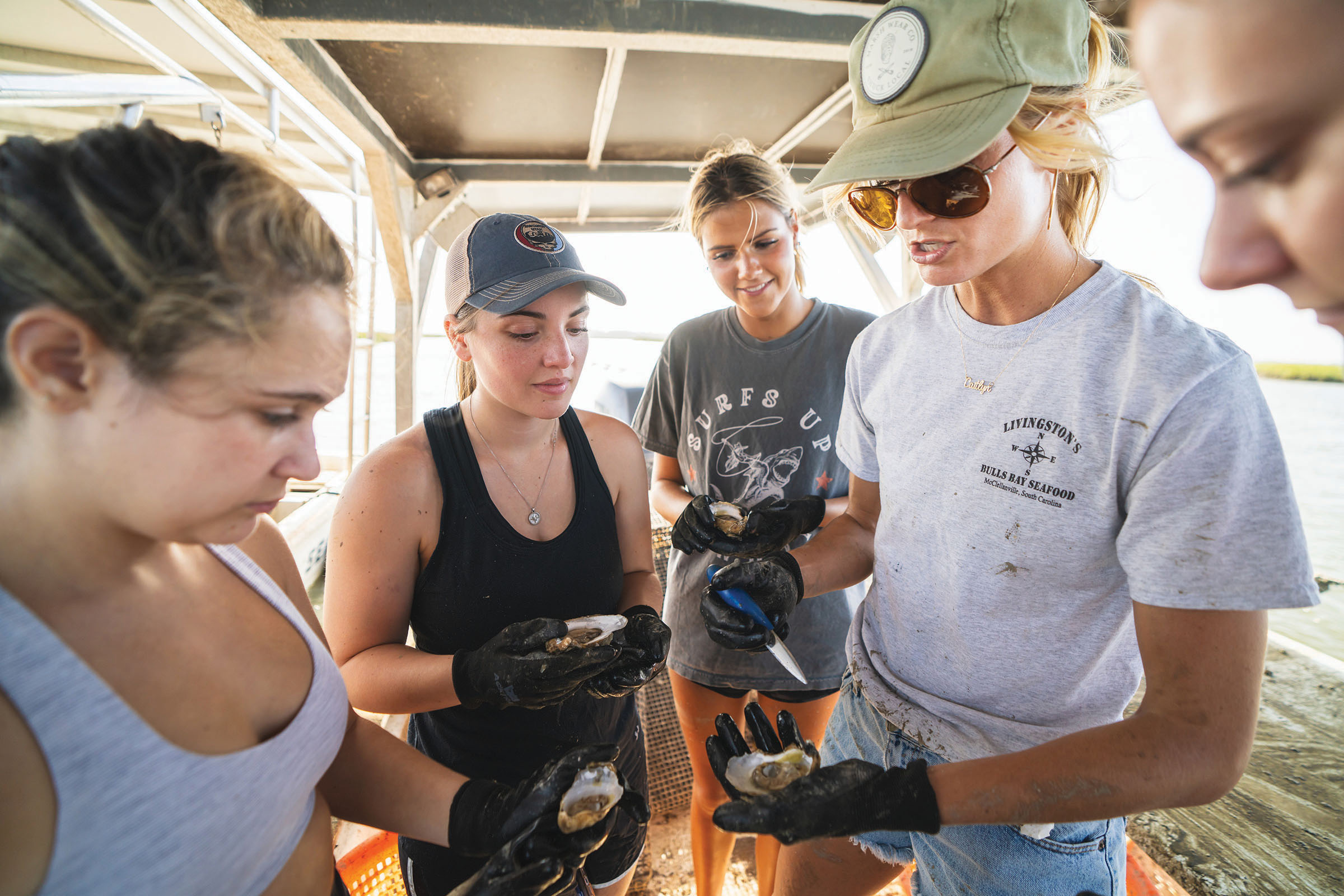
Caitlyn Bierce ’12 (M.S. ’17)
Although Caitlyn Bierce ’12 (M.S. ’17) traded her role at Charleston Oyster Farm – which she started with her husband, Peter Bierce ’12, and his brother in 2017 – for other mariculture projects in the Lowcountry, she learned a lot from her time on the farm. Now she’s passing along that experience to undergraduate and graduate students in her Applied Aquaculture course.
“Ultimately, what I enjoyed was how much oysters gave back to the environment,” says the geology department adjunct professor. “I wanted to share that with students and hopefully create kind of a pluff mud–up approach to awareness for the importance of mariculture. Because oyster farm management is very much a science, and then the viability of the product in the market is very much a business, I designed the course in a way that shows how you can take a science and make it into a business. So you’re not just stuck in this environmental niche; you can expand upon what you already know and start using it to make an ethically sourced income.
“Besides, the oyster class creates an experiential learning platform, something our college can do that not a lot of others can,” she continues, adding that she takes her students to a variety of farms and agencies to do fieldwork. “I wanted to create a way for them to start integrating their information from the classroom with the information that they’re actually going to face in real life and use that to their advantage while they’re still surrounded by the resources at CofC. So I think students get a lot out of it.”
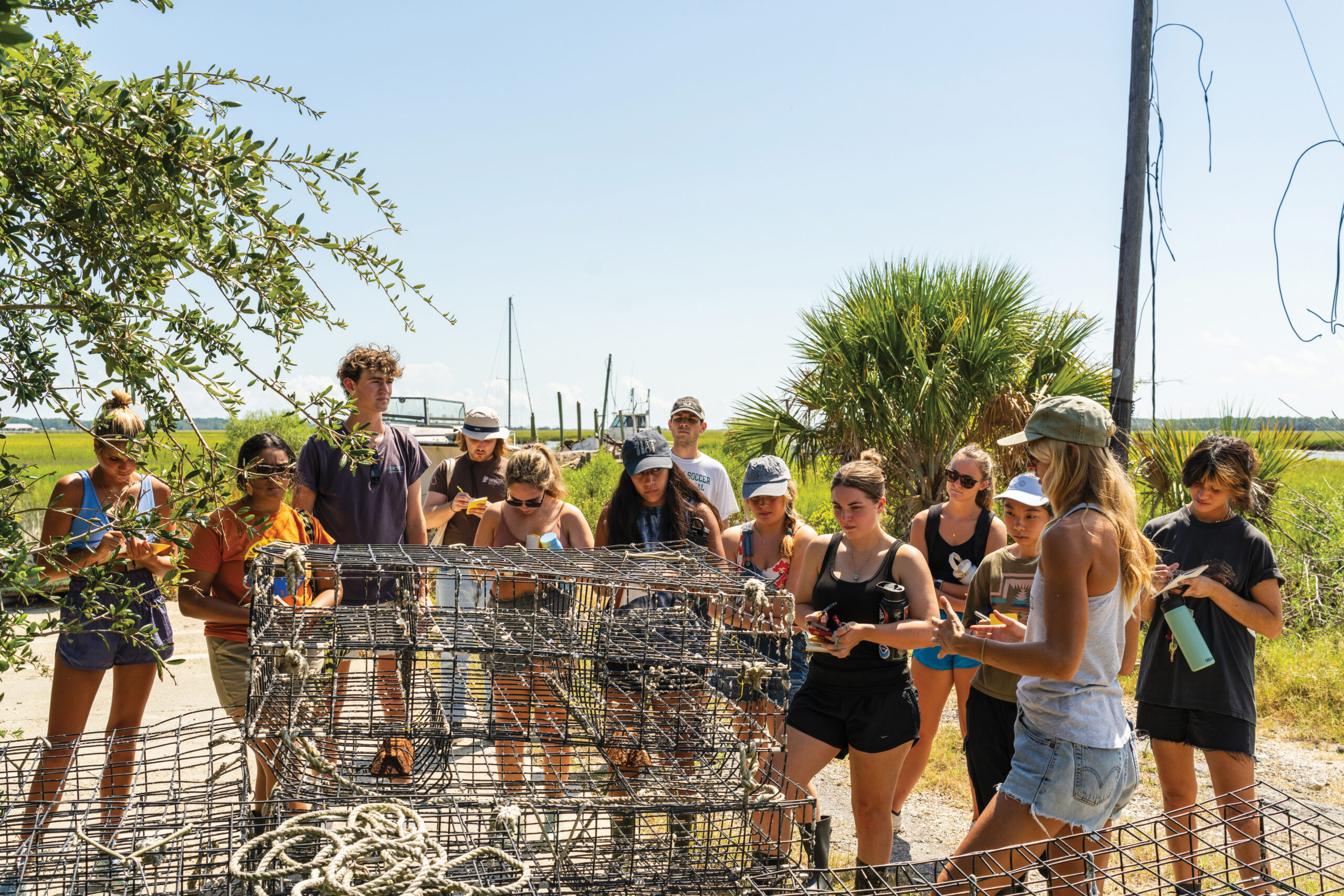
So, she hopes, will the future of mariculture in the Lowcountry.
“Part of why I wanted students to do this is so that, if this industry does grow, there are people who can start entering that industry with a little bit of experience, or people who can enter into management or policymaking,” she says, adding that her students are involved in the local oyster farms through research projects, internships and volunteer opportunities. “We need people who have a background and experience in this area, and these students are so hungry to learn and just be in the field, it will shine through from one thing to the next, even if they don’t go into aquaculture.”
More than anything, Bierce wants her students to appreciate the oyster.
“Oysters are such a beautiful species, and we owe so much to them,” she says. “I think it’s important to understand the role they play and how they can be used to inspire and grow the world around us.”
